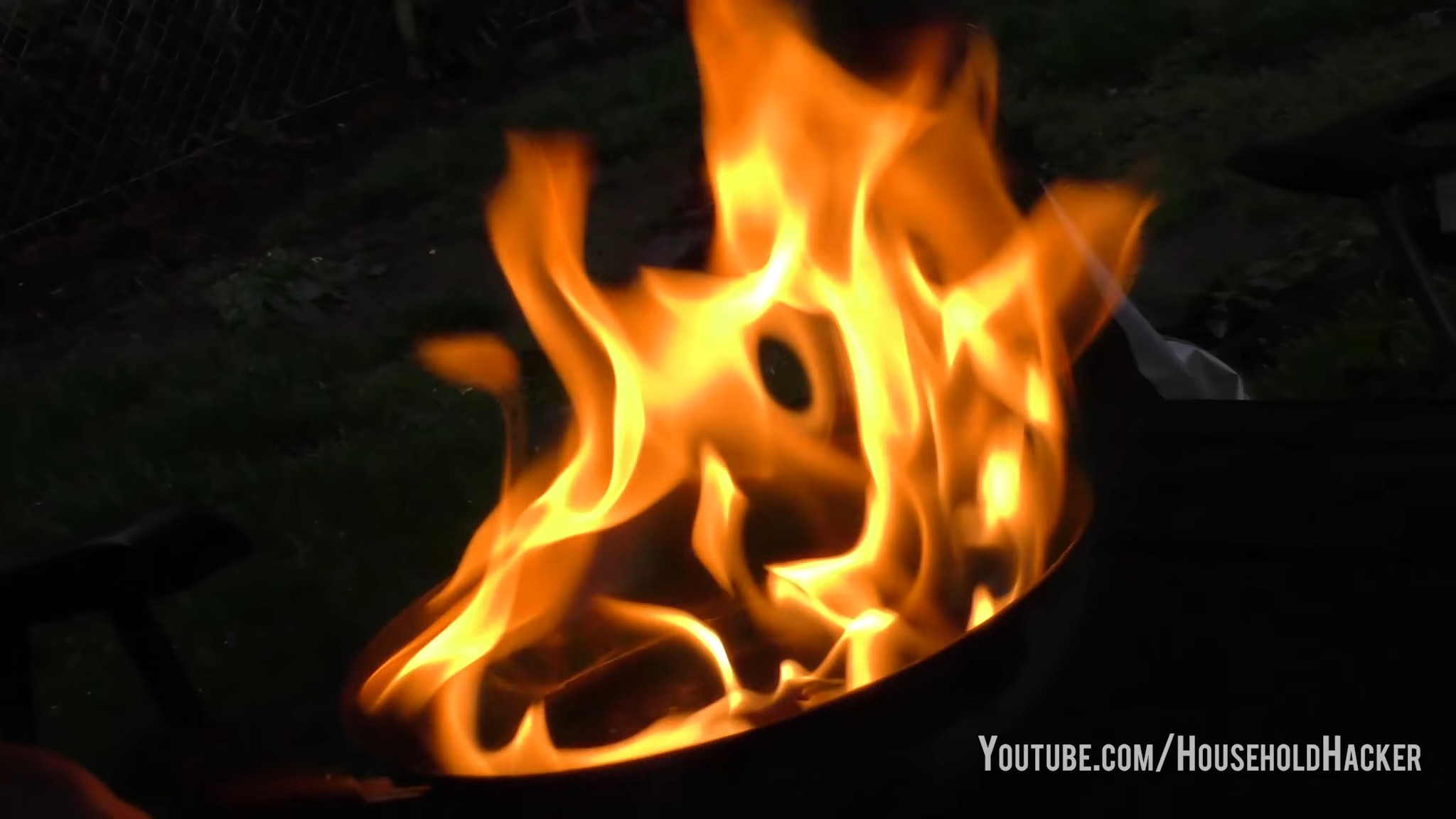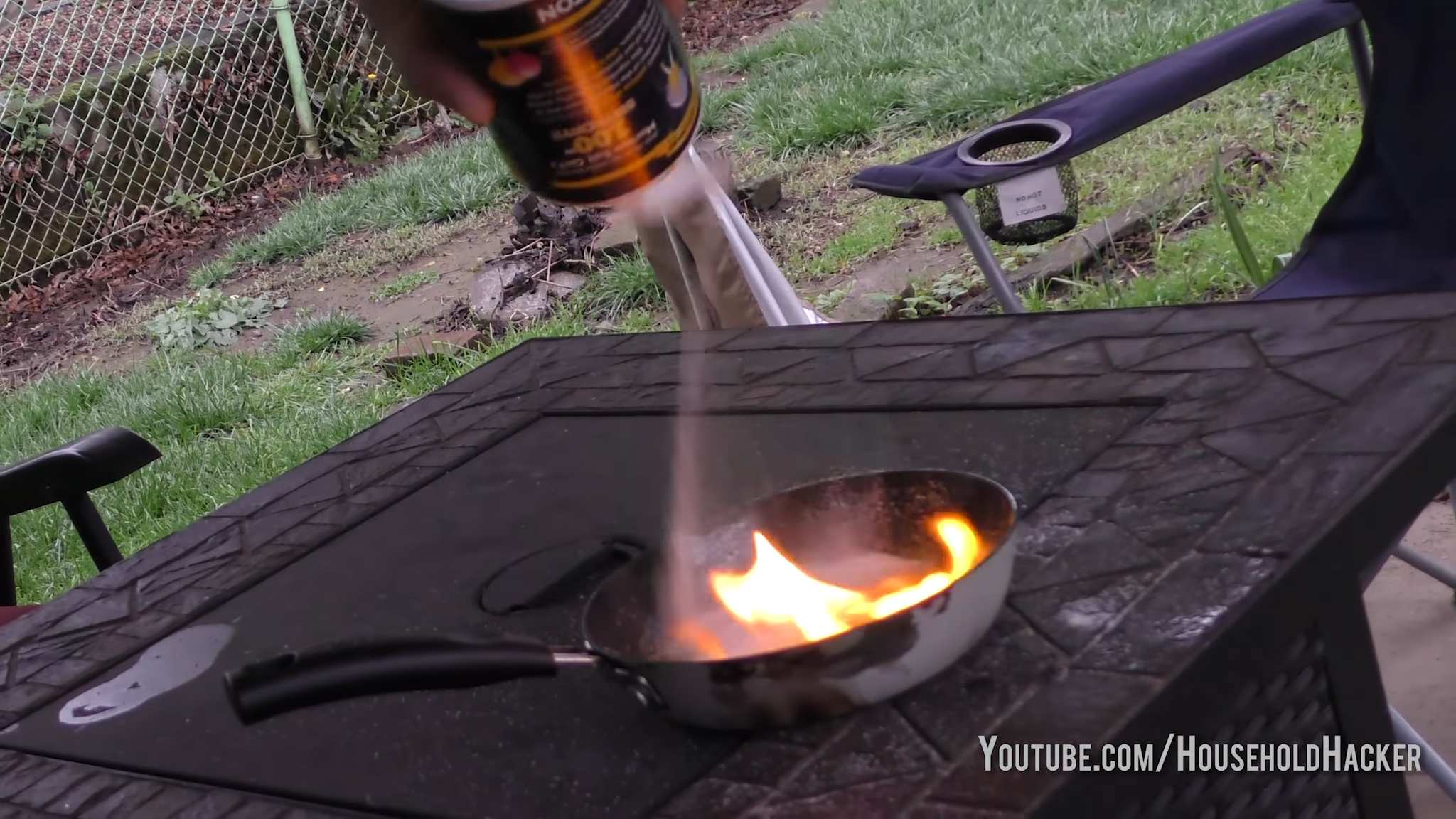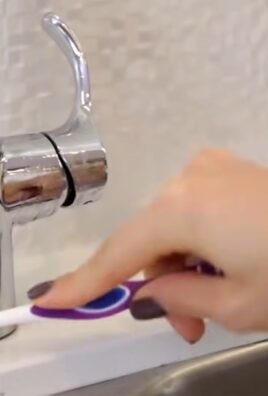Salt cleaning hacks – who knew something so simple could be so powerful around the house? I’m always on the lookout for easy, affordable ways to keep my home sparkling, and I’ve discovered that good old salt is a true unsung hero in the cleaning department. For centuries, cultures around the world have recognized salt’s natural abrasive and absorbent properties. Think about it: ancient civilizations used salt not only for preserving food but also for purifying spaces and even medicinal purposes!
But why should you care about salt cleaning hacks today? Well, let’s face it, cleaning products can be expensive and often filled with harsh chemicals. I believe we all deserve a clean and healthy home without breaking the bank or exposing ourselves to unnecessary toxins. That’s where these DIY salt cleaning tricks come in. From scrubbing stubborn stains to deodorizing musty spaces, salt offers a surprisingly effective and eco-friendly alternative.
In this article, I’m going to share my favorite salt cleaning hacks that will transform your cleaning routine. Get ready to ditch the harsh chemicals and embrace the power of this natural wonder! You’ll be amazed at how versatile and effective salt can be, and your wallet (and the planet) will thank you for it.

DIY Salt Cleaning Hacks: Unleash the Power of Sodium Chloride!
Hey everyone! I’m super excited to share some of my favorite DIY cleaning hacks using something you probably already have in your kitchen: salt! Yes, plain old table salt. It’s not just for seasoning food; it’s a surprisingly effective and eco-friendly cleaning agent. Get ready to be amazed by its versatility!
General Tips for Using Salt as a Cleaner
Before we dive into the specific hacks, here are a few general tips to keep in mind:
* Test First: Always test any cleaning solution, even a mild one like salt, on an inconspicuous area first. This is especially important for delicate surfaces.
* Use the Right Salt: For most cleaning tasks, regular table salt works just fine. However, for abrasive cleaning, coarse salt (like kosher salt or sea salt) can be more effective. Just be careful not to scratch delicate surfaces.
* Don’t Overdo It: A little salt goes a long way. You don’t need to use a ton to get good results.
* Rinse Thoroughly: After cleaning with salt, always rinse the area thoroughly with water to remove any residue.
* Safety First: While salt is generally safe, avoid getting it in your eyes.
Cleaning Your Cast Iron Skillet
Cast iron skillets are amazing, but cleaning them can be a pain. Salt is my go-to solution!
1. Scrape off Excess Food: After cooking, use a spatula or scraper to remove any large pieces of food from the skillet.
2. Add Salt and a Little Water: Pour a generous amount of coarse salt (about 1/4 to 1/2 cup) into the skillet. Add just enough water to form a paste.
3. Scrub Vigorously: Use a stiff brush or sponge to scrub the skillet. The salt will act as a gentle abrasive, helping to loosen stuck-on food.
4. Rinse and Dry: Rinse the skillet thoroughly with hot water. Immediately dry it with a clean towel.
5. Season (Optional): To maintain the seasoning, you can heat the skillet on the stovetop over medium heat until it’s completely dry. Then, add a teaspoon of oil and rub it all over the surface with a paper towel. Heat for a few more minutes until the oil starts to smoke slightly. Let it cool completely.
Removing Rust
Rust can be a real eyesore, but salt can help!
1. Prepare a Paste: Mix salt with lemon juice or white vinegar to form a thick paste. The acidity of the lemon juice or vinegar helps to break down the rust.
2. Apply the Paste: Apply the paste generously to the rusted area.
3. Let it Sit: Allow the paste to sit for at least 30 minutes, or even longer for stubborn rust.
4. Scrub: Use a scrub brush or steel wool to scrub the rusted area. The salt will act as an abrasive, helping to remove the rust.
5. Rinse and Dry: Rinse the area thoroughly with water and dry it completely.
6. Repeat if Necessary: If the rust is particularly stubborn, you may need to repeat the process.
Cleaning Your Iron
A dirty iron can leave marks on your clothes. Here’s how to clean it with salt:
1. Safety First: Make sure your iron is unplugged and completely cool.
2. Prepare a Salt Surface: Spread a thick layer of salt on an ironing board or a clean, heat-resistant surface.
3. Heat the Iron (Low Setting): Turn the iron on to a low setting (no steam).
4. Iron the Salt: Gently iron the salt for a few minutes, moving the iron back and forth. The salt will help to remove any residue from the soleplate.
5. Wipe Clean: Unplug the iron and let it cool completely. Wipe the soleplate with a clean, damp cloth to remove any remaining salt.
Freshening Up Your Sink Drain
A smelly sink drain is never pleasant. Salt can help neutralize odors and keep your drain clear.
1. Pour Salt Down the Drain: Pour about 1/2 cup of salt down the drain.
2. Follow with Hot Water: Pour a pot of boiling water down the drain.
3. Let it Sit: Let the mixture sit for a few hours, or even overnight.
4. Flush with Water: Flush the drain with plenty of hot water.
Cleaning Coffee and Tea Stains from Mugs
Those stubborn coffee and tea stains in your mugs are no match for salt!
1. Dampen the Mug: Lightly dampen the inside of the mug with water.
2. Add Salt: Sprinkle a generous amount of salt into the mug.
3. Scrub: Use a sponge or your fingers to scrub the inside of the mug. The salt will act as a gentle abrasive, removing the stains.
4. Rinse: Rinse the mug thoroughly with water.
Cleaning Egg Residue from Pans
Burnt egg residue is notoriously difficult to remove. Salt to the rescue!
1. Sprinkle with Salt: Immediately after cooking eggs, sprinkle a generous amount of salt over the residue in the pan.
2. Add Water: Add just enough water to cover the bottom of the pan.
3. Let it Sit: Let the mixture sit for about 10-15 minutes.
4. Scrub: Use a sponge or scraper to scrub the pan. The salt will help to loosen the egg residue.
5. Wash as Usual: Wash the pan as you normally would.
Cleaning Wine Stains
Spilled wine? Don’t panic! Salt can help absorb the stain.
1. Act Fast: The sooner you act, the better.
2. Blot the Stain: Blot the stain with a clean cloth to remove as much liquid as possible.
3. Cover with Salt: Cover the stain generously with salt.
4. Let it Sit: Let the salt sit for several hours, or even overnight. The salt will absorb the wine.
5. Vacuum or Brush Away: Vacuum or brush away the salt.
6. Wash as Usual: Wash the item as you normally would.
Polishing Brass and Copper
Salt can help restore the shine to your brass and copper items.
1. Prepare a Paste: Mix equal parts salt, flour, and white vinegar to form a paste.
2. Apply the Paste: Apply the paste to the brass or copper item.
3. Let it Sit: Let the paste sit for about 15-30 minutes.
4. Rinse and Polish: Rinse the item thoroughly with warm water and dry it with a soft cloth. Polish with a clean, dry cloth to restore the shine.
Cleaning Your Cutting Board
Cutting boards can harbor bacteria, so it’s important to keep them clean. Salt is a great natural disinfectant.
1. Sprinkle with Salt: Sprinkle a generous amount of salt over the cutting board.
2. Rub with Lemon: Cut a lemon in half and use it to rub the salt into the cutting board. The lemon juice will help to disinfect and deodorize the board.
3. Rinse: Rinse the cutting board thoroughly with warm water.
Cleaning Your Oven
Burnt food in the oven can create unpleasant odors and be difficult to clean. Salt can help loosen the grime.
1. Sprinkle Salt on Spills: While the oven is still warm (but not hot!), sprinkle salt directly onto fresh spills.
2. Let Cool: Allow the oven to cool completely.
3. Scrub and Wipe: Once cool, scrub the salted areas with a damp sponge or cloth. The salt will help to loosen the baked-on food.
4. Wipe Clean: Wipe the oven clean with a damp cloth.
Cleaning Grout
Dirty grout can make your tiles look dingy. Salt can help brighten it up.
1. Make a Paste: Mix salt with baking soda and a little water to form a paste.
2. Apply to Grout: Apply the paste to the grout lines.
3. Scrub: Use an old toothbrush or grout brush to scrub the grout lines.
4. Rinse: Rinse the grout lines thoroughly with water.
Removing Water Rings from Wood Furniture
Those pesky water rings on your wood furniture can be frustrating. Salt and oil can help!
1. Make a Paste: Mix salt with a small amount of vegetable oil or olive oil to form a paste.
2. Apply to Ring: Gently apply the paste to the water ring.
3. Rub Gently: Rub the paste gently

Conclusion
So, there you have it! Ditching harsh chemicals and embracing the power of salt for cleaning is not just a trend; it’s a revolution in sustainable and effective home care. We’ve explored a multitude of ways to harness the abrasive and absorbent properties of this humble ingredient, from scrubbing stubborn stains to deodorizing unpleasant odors. The versatility of salt is truly remarkable, making it an indispensable tool in your cleaning arsenal.
Why is this DIY salt cleaning trick a must-try? Because it’s simple, affordable, eco-friendly, and incredibly effective. You’re likely already have salt in your pantry, eliminating the need for expensive and potentially harmful commercial cleaners. You’re reducing your environmental footprint by minimizing plastic waste and avoiding harsh chemicals that can pollute our waterways. And, most importantly, you’re achieving sparkling clean results without compromising your health or the well-being of your family.
But the beauty of DIY lies in its adaptability. Feel free to experiment with different types of salt. Coarse sea salt is excellent for heavy-duty scrubbing, while finer table salt is gentler on delicate surfaces. You can also enhance the cleaning power of salt by combining it with other natural ingredients. Try adding a few drops of essential oils like lemon, tea tree, or lavender for a refreshing scent and added antibacterial properties. For tougher stains, create a paste of salt and baking soda for an extra boost of cleaning power. You can even infuse your salt with herbs like rosemary or thyme for a fragrant and effective all-purpose cleaner.
Don’t be afraid to get creative and tailor these salt cleaning hacks to your specific needs and preferences. The possibilities are endless!
We’re confident that once you experience the magic of salt cleaning, you’ll never look back. It’s a game-changer for anyone seeking a healthier, more sustainable, and more effective way to keep their home clean and fresh.
Now, it’s your turn! We encourage you to try these DIY salt cleaning tricks and share your experiences with us. Let us know which hacks worked best for you, what variations you tried, and any tips or tricks you discovered along the way. Your feedback is invaluable and will help us continue to refine and improve our cleaning methods. Share your stories and photos on social media using #SaltCleaningHacks and let’s build a community of eco-conscious cleaners together! Let’s spread the word about the amazing power of salt and create a cleaner, healthier world, one salt scrub at a time.
Frequently Asked Questions (FAQs)
Is salt safe to use on all surfaces?
While salt is generally a safe and effective cleaning agent, it’s important to exercise caution when using it on certain surfaces. Avoid using coarse salt on delicate surfaces like polished wood, painted walls, or soft plastics, as it can cause scratches. Always test a small, inconspicuous area first to ensure that the salt doesn’t damage the surface. For delicate surfaces, opt for finer table salt or dissolve the salt in water before applying it. Remember, prevention is key!
What types of salt are best for cleaning?
The best type of salt for cleaning depends on the task at hand. Coarse sea salt is ideal for scrubbing tough stains and grime from durable surfaces like pots, pans, and oven racks. Table salt is a good all-purpose cleaner and can be used on a wider range of surfaces. Epsom salt, while technically a mineral compound, also has cleaning properties and can be used to deodorize drains and clean bathroom tiles. Kosher salt is another great option for general cleaning due to its larger crystals and lack of additives. Experiment with different types of salt to find what works best for your specific needs.
Can I use salt to clean my stainless steel appliances?
Yes, salt can be used to clean stainless steel appliances, but it’s important to use it carefully. Dissolve the salt in warm water to create a gentle cleaning solution. Apply the solution to the stainless steel surface with a soft cloth and rub in the direction of the grain. Rinse with clean water and dry thoroughly to prevent water spots. Avoid using abrasive salt directly on stainless steel, as it can scratch the surface.
How do I remove stubborn stains with salt?
For stubborn stains, create a paste of salt and water or salt and baking soda. Apply the paste to the stain and let it sit for several minutes before scrubbing gently with a soft cloth or sponge. For particularly tough stains, you can add a few drops of vinegar or lemon juice to the paste. Rinse thoroughly with clean water and dry. Remember to test the paste on a small, inconspicuous area first to ensure that it doesn’t damage the surface.
Is salt effective for deodorizing?
Yes, salt is an excellent deodorizer. It absorbs odors and helps to neutralize unpleasant smells. To deodorize your refrigerator, place a small bowl of salt inside. To freshen up your garbage disposal, pour a cup of salt down the drain followed by cold water. You can also use salt to deodorize carpets and rugs by sprinkling it over the surface, letting it sit for a few hours, and then vacuuming it up.
Can I use salt to clean my cast iron skillet?
Yes, salt is a great way to clean your cast iron skillet without damaging the seasoning. After cooking, while the skillet is still warm, sprinkle a generous amount of coarse salt into the pan. Use a dry cloth or paper towel to scrub the salt around the pan, removing any food residue. Rinse the skillet with hot water and dry it thoroughly. Then, lightly coat the skillet with oil and heat it on the stovetop for a few minutes to maintain the seasoning.
How often should I use salt for cleaning?
The frequency of using salt for cleaning depends on your needs and preferences. You can use salt for daily cleaning tasks like wiping down countertops and scrubbing sinks. For deeper cleaning tasks like removing stubborn stains or deodorizing, you can use salt as needed. There’s no set rule, so experiment and find what works best for you.
Are there any surfaces I should absolutely avoid cleaning with salt?
Yes, there are certain surfaces that you should avoid cleaning with salt. These include:
* Polished wood: Salt can scratch the finish.
* Painted walls: Salt can damage the paint.
* Soft plastics: Salt can scratch the surface.
* Delicate fabrics: Salt can be too abrasive.
* Gold-plated items: Salt can corrode the plating.
Always test a small, inconspicuous area first before cleaning any surface with salt.
Can I mix salt with other cleaning agents?
Yes, you can mix salt with other natural cleaning agents to enhance its cleaning power. Some popular combinations include:
* Salt and vinegar: This combination is great for removing hard water stains and mildew.
* Salt and baking soda: This combination is effective for scrubbing tough stains and grime.
* Salt and lemon juice: This combination is ideal for brightening surfaces and removing odors.
* Salt and essential oils: This combination adds a pleasant scent and antibacterial properties.
Experiment with different combinations to find what works best for your cleaning needs.
Where can I find more information about salt cleaning hacks?
You can find more information about salt cleaning hacks online through various websites, blogs, and social media platforms. Search for “salt cleaning hacks,” “DIY cleaning with salt,” or “natural cleaning with salt” to find a wealth of information and resources. You can also consult books and magazines on natural cleaning and home care. Remember to always verify the information you find online and test any new cleaning methods on a small, inconspicuous area first.




Leave a Comment